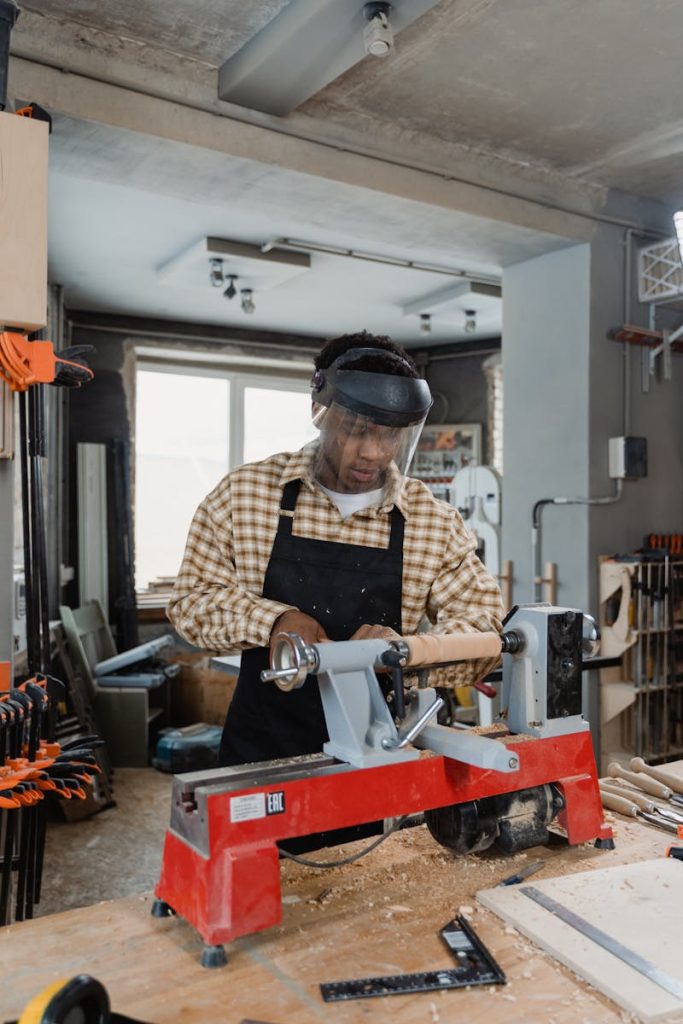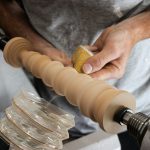Simple Bowls: A Perfect Beginner Lathe Project
When starting your woodturning journey, bowls are one of the best projects to dive into. They provide a great introduction to mastering essential lathe techniques like shaping, hollowing, and achieving a smooth surface. Simple bowls allow you to develop your skills gradually, making them an excellent starting point for beginners.
Why Bowls Are Ideal for Beginners
- Mastering Tool Control
Turning a bowl helps you gain confidence in controlling your lathe tools, especially chisels and gouges. The curved nature of bowls encourages you to practice smooth, consistent cuts, learning to adjust the tool’s angle as you work on the contours of the piece. This skill is fundamental to woodturning and will benefit all future projects. - Understanding Grain Direction
As you turn a bowl, you’ll become more familiar with how grain direction affects your cuts. Working with the grain can produce smoother results, while cutting against the grain may lead to tear-outs. By practicing on simple bowl projects, you’ll start to develop a sense of how to read the wood and adjust your approach accordingly. - Honing Smoothing and Sanding Techniques
Achieving a smooth finish is a key aspect of turning bowls. Starting with softwoods like pine or maple allows you to practice smoothing the surface after shaping the bowl. Sanding becomes a crucial step to remove tool marks and prepare the wood for finishing. Developing these techniques early will help ensure your projects look polished and professional. - Learning Hollowing Skills
Turning bowls also introduces you to hollowing, which is the process of removing material from the inside of the bowl. This teaches you how to use specific lathe tools like bowl gouges and scrapers to carve out the interior while maintaining the integrity of the outer shape. Hollowing requires a delicate touch, and starting with small, simple bowls is a great way to develop precision. - Experimenting with Wood Types
Start by using softwoods, such as pine, poplar, or maple, as they are easier to shape and work with for beginners. As your skills progress, you can experiment with hardwoods like cherry or walnut to create more durable and aesthetically pleasing bowls. Hardwoods present a new set of challenges, such as increased density and a greater resistance to cutting tools, helping to refine your technique even further.
How to Get Started
- Choose Your Blank
Start with a small, pre-cut wood blank, ideally a softwood like pine or maple. These woods are more forgiving for beginners and help you focus on shaping without worrying too much about tool marks or tear-outs. - Mounting on the Lathe
Secure your wood blank on the lathe using a faceplate or a chuck, depending on the size and shape of your blank. Ensure the piece is balanced to avoid excessive vibration while turning. - Start Shaping
Begin by roughing out the exterior of the bowl using a bowl gouge. Gradually work your way into the shape, making smooth, controlled cuts as you define the profile of your bowl. Once you’re satisfied with the outer shape, start hollowing out the interior. - Smoothing and Finishing
Once the bowl is shaped, smooth the surface with progressively finer grits of sandpaper. This will help you achieve a silky finish, free from tool marks. Finally, apply a wood finish of your choice to protect and enhance the natural beauty of the grain.
Tips for Success
- Start small: Don’t rush into larger or more complex projects until you’re comfortable with the basics. Small bowls are ideal for beginners and give you ample room to practice.
- Use sharp tools: Dull tools make the process much more difficult and increase the likelihood of rough cuts or tear-outs.
- Take your time: Woodturning is a process that requires patience. Work slowly, especially when hollowing, to avoid mistakes and achieve better results.
- Safety first: Always wear appropriate protective gear, including eye protection and a dust mask, to protect yourself from flying wood chips and dust.
Conclusion
Simple bowls are a classic beginner lathe project that offers a solid foundation in woodturning. They teach you essential skills like tool control, grain direction, and smoothing techniques, all while allowing room for creativity. As you improve, you can challenge yourself with larger, more intricate bowls made from harder woods, but starting simple is the key to building your confidence and skillset.
By mastering the art of bowl turning, you’ll be well on your way to exploring more advanced woodturning projects in no time!



